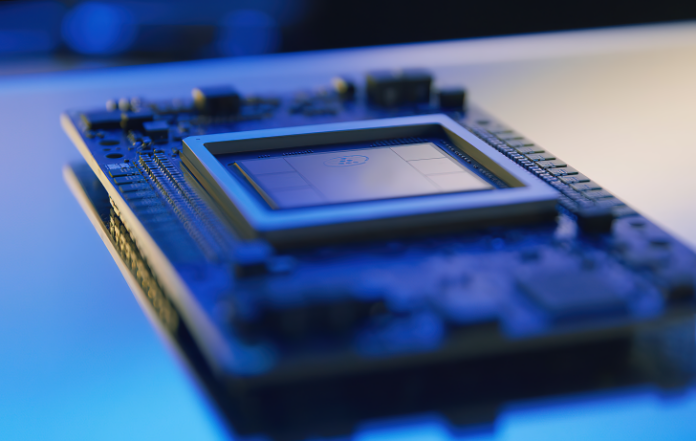
Intel has released updated MLPerf benchmarks of its Gaudi2 accelerators, which have been the talk of the town recently. The data obtained proves that the Gaudi AI accelerators are framing out to be a viable alternative to NVIDIA's H100 GPUs, allowing Intel to get its share of the "AI hype".
Intel Gaudi2 Accelerators Narrows The Gap Between NVIDIA's H100s, Overthrows the Outdated A100 AI GPUs
Before diving into the benchmarks, it is important to realize that the AI industry is predicted to grow exponentially in the coming years. Gartner, an American insight firm, has disclosed that the AI industry is set to reach a $53.4 billion valuation in 2023, which is an increment of 20.9% from the previous year. Moreover, the firm predicts that the industry could almost reach the $120 billion mark by 2027, which is a prime reason why companies like Intel and AMD are striving to make a dominant entry with their own AI solutions.

Based on the data released by Intel, Gaudi2 accelerators have seen a decent performance uplift, outperforming NVIDIA's A100 AI GPUs by a good margin. Intel says that their Gaudi2 accelerator offers much better "value" compared to their counterparts in the market, and they are indeed right given the inflated prices NVIDIA's AI GPUs are being sold at.

- Gaudi2 delivers compelling performance vs. Nvidia’s H100, with H100 showing a slight advantage of 1.09x (server) and 1.28x (offline) performance relative to Gaudi2.
- Gaudi2 outperforms Nvidia’s A100 by 2.4x (server) and 2x (offline).
- The Gaudi2 submission employed FP8 and reached 99.9% accuracy on this new data type.
While the above-mentioned statistics are indeed impressive, Intel has left out some details to reveal such as relevant TDP and temperature stats. They don't matter in the longer run especially with the current state of the industry, since the H100s are facing an immense shortage, with the demand and supply chain disrupted due to an "influx" of huge orders. In light of this, Intel's Gaudi2 accelerators are turning out to be a strong alternative, however, work still needs to be done here.
Apart from Gaudi accelerators, Intel also revealed some benchmarks of their 4th Gen Intel Xeon Scalable and Xeon CPU Max, which have been lately thriving in the industry due to the performance value they bring onboard. These are the main result highlights:
- The 4th Gen Intel Xeon Scalable processor is ideal for building and deploying general-purpose AI workloads with the most popular AI frameworks and libraries. For the GPT-J 100-word summarization task of a news article of approximately 1,000 to 1,500 words, 4th Gen Intel Xeon processors summarized two paragraphs per second in offline mode and one paragraph per second in real-time server mode.
- For the first time, Intel submitted MLPerf results for the Intel Xeon CPU Max Series, which provides up to 64 gigabytes (GB) of high-bandwidth memory. For GPT-J, it was the only CPU able to achieve 99.9% accuracy, which is critical for applications for which the highest accuracy is of paramount performance.
- Intel collaborated with its original equipment manufacturer (OEM) customers to deliver their own submissions, further showcasing AI performance scalability and wide availability of general-purpose servers powered by Intel Xeon processors that can meet customer service level agreements (SLAs).

David Zinsner, in a meeting at the Citi Global Technology Conference, revealed that Intel has seen the perfect opportunity to establish itself as a player in the AI industry, saying that it has received massive interest in its Gaudi accelerators as an alternative to NVIDIA AI GPUs, which are currently in a tough spot when it comes to production and delivery stages.
The challenges in getting GPUs — I think we see more customers taking a look at Gaudi as an alternative. And in addition, the price points are better and more attractive.
Zinsner has expressed the company's attention to adopting a more "balanced" approach in the AI industry, offering competitive products. The official has realized that fact that the company's Sapphire Rapids lineup has received more attention, while the AI accelerator department was left out. Zinsner claims that Intel has been focusing on its GPU segment for a while now, with a majority of the company's finances allocated to its development which catalyzed the "downfall" of data center revenue.
There’s a need for GPUs to do that [AI] work. I think we are a beneficiary of that because of the CPU that we have.
That takes a little bit of a wind out of the sales of our data center business and is part of why we think Q3 three and Q4 four will be more muted than they have been in the past.
Intel is currently moving towards focusing on the AI industry since it has seen the wonders it has done with the likes of NVIDIA and SK Hynix. The approach of Team Blue with Gaudi AI accelerators in the future is hinting towards a positive upturn, and one of the indicators we have seen is the company's plans to integrate next-gen Falcon Shores chips with the Gaudi lineup, expanding its potential to a whole new level. However, work needs to be done here and the only way Intel could oust competition is through revamping its AI products to a whole new level.
While it is late to the party, if the company could make a decisive entry, things could shift their way. With the expected release of cut-down Gaudi accelerators in China coupled with rapid developments the company is making in its AI accelerators, one should expect much from Intel in the coming days.
WccftechContinue reading/original-link]




